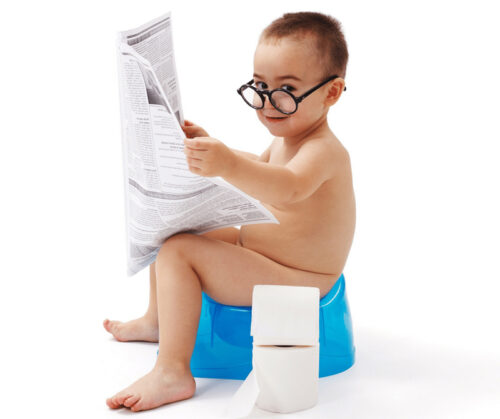Parenting: Toilet Training Is Not a Parenting Test
Toilet Training: I’ts NOT rocket science!
Toilet Training
It’s Not A Parenting Test You Know
by Gregory A. Barrett, M.D.
In nearly every form of human endeavor progress is measured in terms of bigger, faster, stronger, earlier. There will, however, be an occasional exception to this rule.
Getting Started on Toilet Training
Before the availability of disposable diapers, a far greater premium was placed on the importance of self-toileting. This had everything to do with the simple fact that the task of constantly changing and cleaning cloth diapers was incredibly time and labor intensive. The invention of the washing machine helped, of course, but it was the advent of the current generation of super-absorptive disposable diapers which proved to be the real game-changer. The appearance of these products on the shelves led to an immediate and dramatic decline in previously common contact dermatitis diaper rashes; and completely coinciding with a simultaneous delay in the age of achieving toilet mastery. The ancient, time-honored argument, “Don’t you want to feel warm and dry?” was countered by the puzzled toddler thinking to himself, “I don’t really understand what my mommy is talking about. I am warm, and I am dry….” Sure, Spider Man underwear can still be used as an incentive but not much else is available these days to inspire your Huggies-wearing offspring to alter their ways. And since the amount of work involved in changing, cleaning, and storing the cloth diapers disappeared, most parents accepted this new reality and quickly adapted to a significantly more laid-back approach.
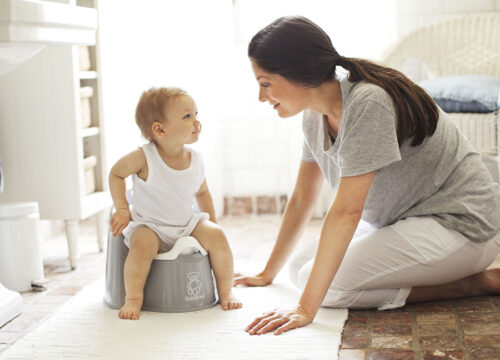
It wasn’t always so. A study from Finland published recently took an extraordinarily patient thirty-year examination of early childhood development as a predictor of future academic achievement. The conclusion was that the likelihood of attaining higher education was greater in children who had normal development at the first birthday than in those who were delayed. Granted, this discovery was somewhat predictable and not particularly illuminating, but what I did find fascinating was the definition of normal development for a one-year-old back in 1966. The investigators screened for three landmarks: 1) The child having taken his or her first steps; 2) Speaking one to three interpretable words, and; 3) Defecating in the toilet. Yep, as recently as the 1960’s a child who was not pooping in the potty by the time he or she turned one was considered developmentally delayed and at risk.
And this was not just a Scandinavian expectation, either. Going back even earlier a manual published by the United States Government called “Infant Care” (the best-selling publication by our government of all time, by the way) recommended the age for commencing the process of toilet training to be three months in the 1914 original, at birth in the 1921 version, and one month in the revision printed in 1929. I imagine that, what with the crash of the stock market and all, the government must have decided to back off parents a bit in the later edition; but at any rate a fairly aggressive approach was still advocated.
Recommendations for how to achieve this landmark are also of historical interest. The guidebook “Childcare and Training” from the University of Minnesota in 1930 suggested strapping the infant to the potty chair for up to three hours per day, cautioning not to restrain him or her for too much longer due to the risk of creating a rectal prolapse. Parents were warned that complications of failure to accomplish early training included thigh deformities from bulky diapers (not true) and persistence of the nineteenth century myth that poisons were reabsorbed through the colon in cases of stool retention (also not true). The real reasons, of course, included: large families, cloth diapers, no washing machines, little hot water, and the role of the mother as the sole caretaker.
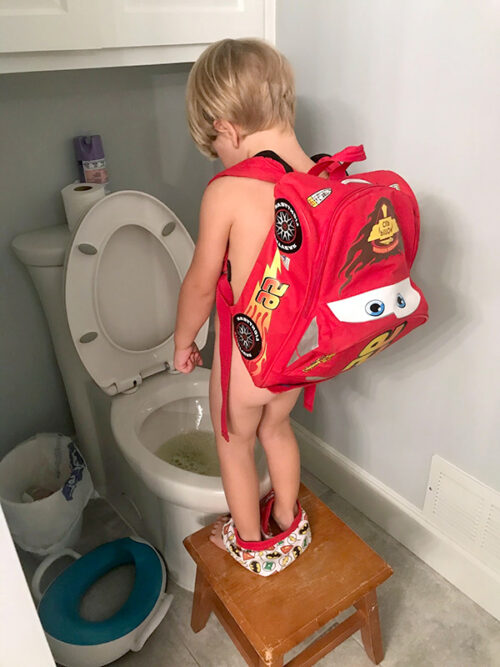
The age of achieving the milestone of self-toileting appears to be directly dependent upon the emphasis the society places on this achievement. In some areas of the world having the child control their excrement is a critical health issue. In the Digo culture of East Africa ninety percent of children can perform both numbers one and two on command at six months, and by one year an outside latrine is universally utilized. Their training regimen begins two weeks after birth by placing the infant in a voiding position and rocking them gently while the parent makes a soft shush-ing sound. Multiple caretakers are involved in the project and successes are rewarded by happy expressions and close physical contact. The mood remains relaxed even though expectations are high. Toilet training must succeed in this society for hygienic reasons, as having 6-10 people living under the same tent and no access to disposable diapers the duration of time the infant contaminates the home environment must be kept to a minimum. It happens because it needs to happen.
Sociological studies such as these demonstrate clearly that this task can be completed successfully at a remarkably early age. In modern Western civilization, however, a premium is placed on having our children sleep through the night, but by and large most parents don’t hype out too much if accidents are still occurring on the first birthday. However, it would be nice for the little one to begin utilizing the potty at some point, if for no other reason than saving money on all of those expensive diapers.
There continues to be a fair amount of controversy regarding: early versus late, coercion versus permissiveness, and training versus teaching, a classic hawks-versus-doves debate. Much of this seems to be generational, as a lot of grandmothers still place huge emphasis on this milestone putting them in conflict with their working daughters or daughters-in-law who have a different set of priorities. Every so often to this day a mother will report having received the gift of potty chair on her child’s second (or even the first!) birthday from its grandma with a card saying, “Use it.” My advice is to ignore this advice. Don’t let this job become a bigger deal than it actually is. Teaching your child to self-toilet is not a critical test of your parenting skills, nor does it reflect the intellectual capacity of your son or daughter.
The basic requirements for toilet training include three items: a child, a potty, and some underwear. Regarding the age for starting, I would suggest unless you are receiving some STRONG indicators of readiness at an earlier time take it easy on yourself and don’t commence the project before he or she turns two. There are several options for the receptacle, but the main decision is choosing between the stand-alone potty chair, or a rim device placed over the adult toilet. (Note – should you select the latter it is vital that the child’s feet not be dangling in space, so do supply them with a foot stool allowing them to bear down.) As far as requirement number three, one can use diapers, training pants, or regular panties/underwear during the training phase. It doesn’t really matter.
Little Boy Potty Training
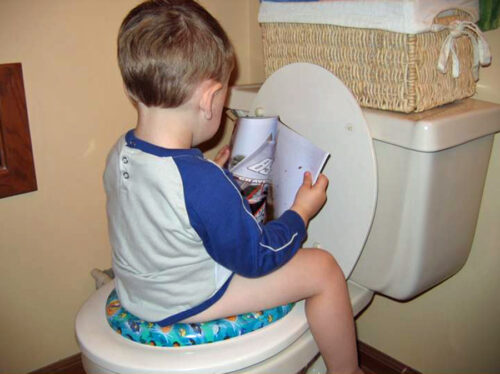
Assuming you have pieced together the necessary components it’s now time to get down to business. Toilet training should proceed in a series of distinct steps, the first being educational. This can be accomplished by reading books, watching videos, and/or simply letting your child observe you doing your business in the bathroom while providing a running play-by-play. Allow him or her to become comfortable with the toilet paper, the flushing, and most importantly sitting on their own little potty seat. Make it fun. Then settle back and quietly observe for signs of readiness. The initial clue is that of the child simply being aware that he or she has gone (into his diaper). Congratulations, you have officially entered the arena, so now it’s time to intensify your educational efforts while awaiting the next signal, your toddler giving a verbal or nonverbal indication that they have to go. This signifies that they have developed the neurological connections to sense awareness of bladder and/or rectal fullness and are primed and ready to unload at the time and location of their choosing. When you see them acting thusly, invite them to sit on the potty and when the miracle finally happens feel free to hug, kiss, praise, and bribe. Sure, go ahead and offer them a treat, that’s okay. It is a scientific fact that many of us would still be in diapers today were it not for an occasional M&M during the training process.
A critical point of emphasis to stress here is to immediately withdraw any and all efforts in this regard if you meet significant resistance. That’s right – back off, drop the project completely for a couple of weeks, and then tiptoe back into it very gradually. This is in line with one of my core rules of parenting: THERE IS NO HARM IN HAVING AN ARGUMENT WITH YOUR CHILD AS LONG AS YOU NEVER LOSE THE ARGUMENT.
In other words, pick your spots. Toilet training is a perfect application of this principle. We can by force of will or authority make our children strap on their seat belts, take a bath, wash their hair, or go to bed; but we CANNOT make them pee in the potty. It simply can’t be done. A soft touch is required and works infinitely better.
There do exist some theoretical complications of coercive toilet training. The most far-fetched are derived from Sigmund Freud’s “Three Contributions to the Theory of Sex.” According to the famous and influential psychiatrist the Anal Stage occurs between eighteen to thirty-six months and the dynamic behind this phase is related to the trauma of toilet training. He theorized that punishment or threatening during this stage could lead either to excessive interest in orderliness, cleanliness, and pleasure on the part of the trainee from withholding stool manifesting later as obsessive-compulsive disorder; or conversely, the toddler would defiantly strike back at the parents with messiness ultimately resulting in the creation of a full-blown sadist.
Little Girl Potty Training
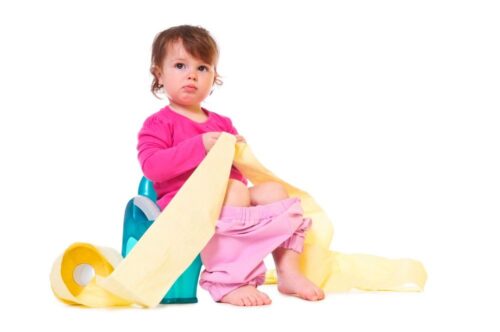
With all of this psychological baggage weighing on their shoulders parents must have felt considerable trepidation when it came time to train their offspring. Not being much of a Freudian myself, I tend to discount most of that stuff; but in the twenty-first century there are some legitimate concerns which can result from applying too heavy a hand. One of them is psychogenic megacolon, the stretching out of the last part of the large intestine far beyond its normal bounds from chronic constipation. How this happens is that simple obstinance on the part of the toddler, or fear of failure, leads to voluntary withholding. As a consequence, when the stool finally does pass it will be [larger, more firm and therefore most likely] painful. This leads to further withholding (children have a natural avoidance mechanism, meaning they will instinctively avoid doing anything that hurts) causing colonic distention and subsequent loss of both sensation (they can’t tell they have to go even with a full load in their rectum) and strength (the stretched muscle can’t contract nearly as strongly making it much more difficult to evacuate when they do try). The ultimate result is encopresis, a condition where there is a chronic malodorous leakage of stool in the underwear secondary to fecal impaction and big-time constipation. Looking back retrospectively fifteen to twenty-five percent of children with this embarrassing affliction have had a history of potty training characterized by early onset, coercion, and a premium placed on perfection.
By far the biggest issue which arises in the course of toilet training is family stress. Because of either a failure to understand the process, having unreasonable expectations, or putting a greater priority on the accomplishment than necessary, mothers and fathers can become completely obsessed to the point of being tied into knots by the continuing failure of their toddler to self-toilet. This can be no laughing matter because there is a significant association between frustration with toilet training and child abuse. So, if you find your temperature rising, cool off and remember that when it comes to potty training do not press against resistance. Try to stay relaxed. Sooner or later, it will happen, I promise. As a matter of fact, countless moms have stated to me, after all was said and done, that if they had to do it all over again, they wouldn’t have even broached the subject until their toddler came to them on bended knee begging to use the potty.
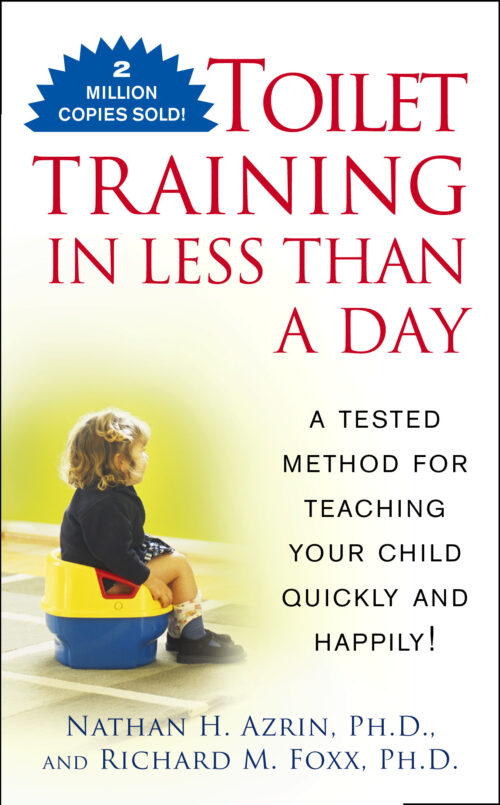
With each subsequent child the process generally becomes easier and success occurs at an earlier age. That may be somewhat due to the parents having picked up a trick or two, but by far a greater portion of the credit comes from the presence of sibling role models. Kids simply do not relate to grown-ups. It’s a fact. To a small child we appear to be something of a foreign species. But the desire to imitate the older brother or sister (sometimes for better, sometimes for worse…) is a powerful motivator and can at times be extremely advantageous.
The major stumbling blocks to achieving dryness are: birth order and, as is the case in nearly all developmental landmarks, male gender. Thus, when it comes to the particular case of a firstborn male, I always prescribe a healthy dose of pessimism. However, it does sometimes happen that a child and its parent can get really stuck. Specifically, this is at the age when the child appears to be fully capable of controlling him- or herself, but still refuses to use the potty. One resource to consider at this point is a book authored by Azrin and Foxx, a pair of clinical psychologists, with one of the most compelling titles in the history of the world’s literature, “Toilet Training in Less Than a Day.” Be forewarned: this manual is unquestionably a bit heavy-handed in places, but it does introduce a style of focused training which can be effective in accomplishing your goal. Or if all else fails remember you can always send your recalcitrant child to their grandmother for a weekend. Sometimes this does the trick.
One final note:
Toilet training and bed-wetting have nothing to do with each other. The latter is an entirely separate issue which is related to depth of sleep and genetics. If you have such a child, my recommendation is to take advantage of the pull-up technology until he or she is consistently dry, keep your pediatrician or family doctor posted, and if it does persist until a specified later age, we’ll step in at that time and advise.
I’m sure you would imagine that with all of my vast knowledge of toilet training, this process must have been a breeze with my own children. Well, not exactly. Actually, it was a borderline disaster.
Our first child, Rachel, was approaching her third birthday, and in spite of being an otherwise extremely bright little girl she still seemed to struggle telling the difference between a toilet and a toaster. But that was okay, we remained cool, and she eventually began to make good progress. And then we goofed, big-time. Here’s how it happened….
Some of my wife’s fellow elementary teachers had placed their children in a local pre-school and raved so much about the enriching qualities of the Montessori program that she became quite intrigued with the idea of enrolling Rachel. The bee was buzzing excitedly in her bonnet, so one fine spring day my wife dragged her shy, reluctant daughter (and thoroughly disinterested husband) along for a tour of the place. Now Rachel would have been the youngest student by at least twelve months, and all of the other kids appeared to be rugged, street-wise, tough-looking four-and five-year-olds, hardened by long years spent in holding cells such as this; but my wife’s unbridled enthusiasm completely dwarfed her daughter’s reservations. In retrospect one can only imagine how threatening and undesirable the pre-school must have appeared to tiny Rachel. Nevertheless, my wife successfully lobbied the head administrator to admit our under-aged daughter and she was signed up for the upcoming fall with one lone proviso.
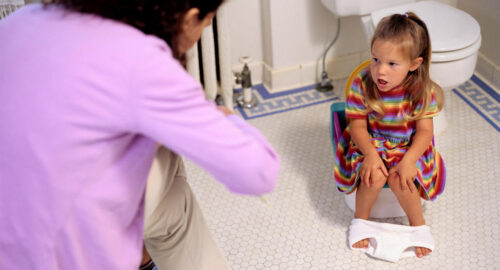
“She will, of course, need to be potty trained.”
“No problem,” Rachel’s mother smiled confidently.
Thus began the summer of hell. Rachel suddenly had a nearly complete relapse in self-toileting and no combination of carrots or sticks had any influence on her whatsoever. As the deadline grew closer, with still no progress being made, my wife was becoming nearly apoplectic with frustration. Finally, one evening in late August I overheard her voice coming from the bathroom literally pleading to our daughter, “Rachel, honey, please, you really do need to do this. If you don’t start using the potty soon you won’t be able to go to the new pre-school. Instead you’ll have to stay home all day and play with Jeanne (her beloved babysitter at the time) or your mommy.”
Whoa! Wait a second… what did she just say? It finally dawned on us what we had been doing. Talk about a case of misaligned incentives! We instantly deflated the pressure and pretty soon the marvelous sound of urine splashing in the basin of the potty chair was at long last heard in the Barrett household.
Everyone makes mistakes, and just because you’re a mother or a father it does not exempt you from this reality. Not in the least. The truth is being a parent is sort of a learn-on-the-job process. But, as will frequently be re-emphasized in these pages, the important point is to learn from your missteps, and I certainly gained a new understanding about what makes children tick – and pee on demand – from this experience.
And by the way, our second literally trained himself by his second birthday; so, I suppose I can’t really take much credit for Keith, either.
In summary, a laid-back approach is always desirable when it comes to potty training. Patience and incentives are the keys. Don’t allow toilet training to become a power struggle or it will likely become a battle you will lose. Back away when you run into resistance. Try to stay calm at all times and do not give in to pressuring from others. Goodness knows this challenge can be incredibly frustrating if you let it, but do not allow that to happen. Remember, this is not a test of your parenting skills or your child’s intelligence.
Relax. It will happen.
☤
Gregory A. Barrett, M.D.

Gregory A. Barrett, M.D., author of well-known blog “Real Pediatrics,” graduated from the Ohio State University College of Medicine and began practicing at Riverside Pediatrics shortly thereafter.
He is a Clinical Associate Professor at OSU and has received the Distinguished Educator Award by the Ohio State School of Medicine. He received national honors as one of the Best Family Doctors in America by the Ladies Home Journal. He and his wife, Darla Hall, have two children, Rachel and Keith.

